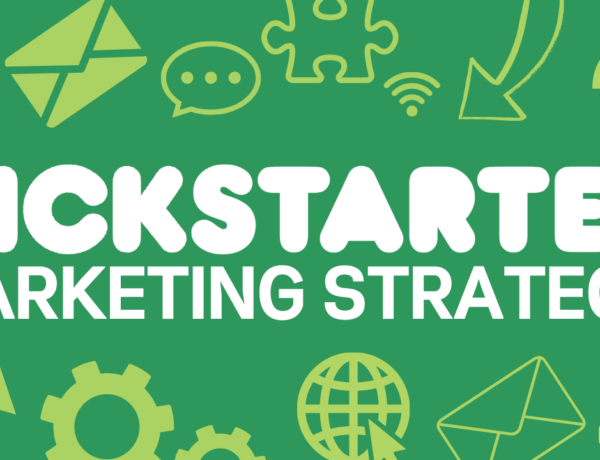Elevant Productions does pitch videos for crowdfunding campaigns. If you’re looking to run a successful Kickstarter or Indiegogo campaign, you’re going to need a stellar pitch video to stand out from the crowd!
Sarunas Daugirdas and Kc Daugirdas from Elevant Productions provided some awesome advice on how to make a video that converts browsers into backers.
What’s the most memorable vid you worked on and why was it great?
 SD: The first video we made at Elevant Productions was for a magnetic bottle opener called DropCatch ($48,281 raised), created by Kent Frayn and Joe Walsh, two of my friends from the University of Illinois. It was a really fun process that resulted in a highly successful production.
SD: The first video we made at Elevant Productions was for a magnetic bottle opener called DropCatch ($48,281 raised), created by Kent Frayn and Joe Walsh, two of my friends from the University of Illinois. It was a really fun process that resulted in a highly successful production.
Our first step was to develop a persuasive script. Kent, Joe, and I swapped out words, crossed out sentences and rewrote paragraphs for days until we had the pitch sounding just right. Because we came out of pre-production with such solid lines, we were able to stay relaxed and focused during the actual filming.
Kent and Joe were receptive to my coaching and had the confidence to improvise the memorized parts just enough to give them that “natural” feel. After collecting the interview and B-roll (contextual) footage, I started what would be a 40-hour editing process for a 75-second finished video. Once the edited visuals were in place, Kc wrote an incredible soundtrack that amplified the “hand-crafted,” optimistic vibe we were going for.
Overall, I’d say the video worked well because it was consistently engaging throughout. Kent and Joe were genuine and friendly on camera, the B-roll showed a whirr of entrepreneurial activity, and the music tied it all together. It’s a video that makes you feel good.
So what’s your favorite pitch vid?
SD: Out of the hundreds of crowdfunding videos I’ve seen, the one for the “Boombot REX Ultraportable Speaker” campaign on Kickstarter is my favorite. They raised $129,906 on Kickstarter. At its core, it’s a video that sells a lifestyle instead of a mere product.
In the first 20 seconds, we see a montage of outdoor sporting activities (e.g. mountain biking, surfing, and even a guy balancing on his head) set to non-diegetic club music with lots of bass. In video production, non-diegetic sound is sound that comes from a source outside of the world you’re seeing on screen. Carefully placed in every one of the montage shots is the REX, a colorful hexagonal speaker that fits in your hand.
As viewers, we begin to associate the pocket-sized and otherwise cute REX with mega beats and an extreme outdoor lifestyle. The footage is beautiful, the editing is fluid, and the motion graphics add that little bit of “wow!” After watching such an engaging introduction, how could you not stick around to learn more?
How do you actually get people to back your campaign after the video?
 KD: We’ve looked at a lot of projects over the years, and it’s always an interesting question, “Why did they succeed? Why did they fail?” The video is the “cover of the book,” so to speak, so it definitely has a strong influence.
KD: We’ve looked at a lot of projects over the years, and it’s always an interesting question, “Why did they succeed? Why did they fail?” The video is the “cover of the book,” so to speak, so it definitely has a strong influence.
The video communicates your aesthetics to the audience. Regardless of your vibe, scene, or audience, the first aesthetic you should be concerned about is, simply, quality. How much do you care about your stuff being really, really awesome? Your campaign, and especially your video, is your chance to prove that quality permeates everything that you attach your name to and vouch for.
If you are hoping that 500 people will pledge $10,000 to your project, forget for a moment that you are only asking for $20-dollar donations. You are asking for $10,000! Imagine for a moment that you are asking for that sum from a bank. That’s the seriousness with which you need to approach your pitch. Just because your cash is going to come from a few hundred people doesn’t change the fact that you are taking $10,000 out of the world’s wallet. Respect that fact!
Here’s a question: Do you like watching poorly-lit strangers sitting in a room that echoes like a public bathroom, talking off the top of their heads about their great new idea, as the humming fridge in the background provides the soundtrack? No, and neither do potential donors.
You must see a lot of frequent pitch mistakes. What are some that stick out?
SD: Sometimes you get these videos that are way too long. Once I encountered a video on Indiegogo that was over ten minutes. Another one consisted of plain text inching slowly across the screen and nothing else. It’s bizarre.
Before publishing your crowdfunding video, ask yourself, “would a stranger want to watch this all the way through?” Not sure? Test it out! Your family members (yes, especially mom) don’t count as test subjects. Show it to someone who will honestly tell you if it’s dragging. If it is, then you need to trim some non-essential parts.
KD: Respect your viewers’ time. Think of it this way: If your video is 10 minutes long when it could be 2 minutes long, and 1000 people watch your video, you have wasted:
(10 – 2 = 8 minutes) x 1,000 views = 8,000 minutes, or 133 hours of the world’s time.
You’re already asking the internet to give you thousands of dollars. Don’t presume to demand hundreds of hours of your audience’s wasted time!
How can we make vids that stand out?
KD: The best place for an innovative or unusual moment your Kickstarter video is right at the start. While many videos start with the standard “Hey, I’m so-and-so, founder of such-and-such,” I’ve seen some great pitches that just launch right into the action and make me forget for a moment that I’m watching an appeal for support.
I recently backed a film project called “The Bridge Partner” that immediately hooked me.
After a quick title screen, the producer simply starts telling the story, accompanied by an eerie soundtrack:
“The story is a psychological thriller, set in this sea-side town…”
We see comic book-style sketches of the protagonist — a timid housewife — and the mysterious femme-fatale who leans in and whispers to protagonist during a game of bridge, “I’m going to kill you.”
And then we get details of the who, how, when, why of the planned production of the film.
My first reaction to the pitch was simply, “I want to know what happens!” I was hooked. In the first 30 seconds, the project’s value was established: It’s going to be a good story. Of course, the production value of the video is what convinced me that the team will actually pull it off. The scene sketches, the well-lit, articulate interview with the producer and screenwriter, the music…it was all very impressive.
In short, I donated!
They also went on to raise $48,650!
What’s the best way to go about getting a video producer?
KD: Before contacting a crowdfunding video production service, you should already have some sort of marketing plan in place. In other words, “making the Kickstarter video” is not the same as “figuring out the whole Kickstarter thing.” As your video producer, I can create a more effective video when I’m focusing on delivering and packaging your message, rather than scratching my head, trying to figure out your message. Make it easy for people to help you!
SD: That’s exactly right. Do your homework. If you come in prepared and willing to communicate, chances are you’ll get a video that amplifies your project. At Elevant Productions, we like to have our clients involved in each stage of the video’s creation for feedback and suggestions. It’s really a team sport: we work on the script together, film the spoken parts and B-roll together, review the edits together, and celebrate together when it’s done!
Sarunas Daugirdas (@SarunasDaug) is a writer, videographer, and producer based in Chicago, IL. He works with his brother, Kc Daugirdas (@symbiotic_sound), a musician and film composer based in Los Angeles, CA. Together, they operate ElevantProductions, a crowdfunding and Kickstarter video production service.








